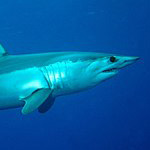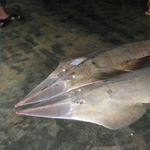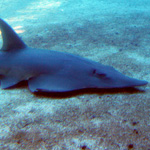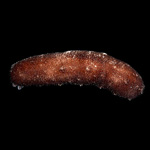On August 25, 2019, government officials at CITES CoP18 voted in favor of granting several marine species increased management and trade observation by officially listing them in Appendix II. While these listings will not prohibit commercial trade, an Appendix II listing will ensure that such trade is legal and sustainable by collecting important data and these species will receive the management that they need to ensure they are not driven further towards extinction.
Shortfin Mako Shark and Longfin Mako Shark
 This action will improve regulation and data collection of international trade in these species, help ensure that trade is legal, and be in keeping with the precautionary principle approach.
This action will improve regulation and data collection of international trade in these species, help ensure that trade is legal, and be in keeping with the precautionary principle approach.
Why this was needed: Mako sharks are an important target species in fisheries due to the high value of their fins and meat and are also known as an inadvertant bycatch. They have suffered from inadequate management resulting in continued fishing pressure. Both species are assessed as Vulnerable on the IUCN Red List and have a decreasing population trend. Moreover, there is mis-identification between the two species, catches are inadequately monitored and recorded, and landings data are underestimated since they do not reflect numbers finned and discarded at sea. Before officials can decide exactly what measures need to be taken, more data must be collected to accurately assess how international trade affects their populations.
Guitarfishes
 This decision will improve regulation of international trade in these species, and help ensure that trade is legal.
This decision will improve regulation of international trade in these species, and help ensure that trade is legal.
Why this is needed: Targeted catch of giant guitarfish species is increasingly due to the high value of the fins on the international market. Coastal development is also a major threat to giant guitarfish species, as well as unmanaged and unregulated fisheries and trade.
Wedgefishes
 This action will open the door for coordinated and comprehensive management and conservation measures that are urgently needed for wedgefishes to prevent further population declines and localized extinctions throughout their range and also prevent international trade in their high value fins from driving them to extinction. This proposal was co-authored by 35 Parties, likely making it the proposal with the most cosponsors since the beginning of CITES.
This action will open the door for coordinated and comprehensive management and conservation measures that are urgently needed for wedgefishes to prevent further population declines and localized extinctions throughout their range and also prevent international trade in their high value fins from driving them to extinction. This proposal was co-authored by 35 Parties, likely making it the proposal with the most cosponsors since the beginning of CITES.
Why this is necessary: International trade is of particular concern for the status of the wedgefishes. Recent research has demonstrated that they are extensively traded for their fins. More data must be collected before experts can advise whether this will be sufficient protection for wedgefishes, but an Appendix II listing is a step in the right direction.
Teatfishes
 The majority of parties agreed to give three Holothuria species additional management and observation by listing them in Appendix II. The listing of these three Holothuria species will allow CITES to manage their trade, ensuring that it is sustainable and legal, and also help to improve data collection for the three species.
The majority of parties agreed to give three Holothuria species additional management and observation by listing them in Appendix II. The listing of these three Holothuria species will allow CITES to manage their trade, ensuring that it is sustainable and legal, and also help to improve data collection for the three species.
Why this is needed: Data shows heavy volumes of Teatfish (also known as sea cucumbers) involved in international trade. Their high commercial value, ease of capture, and vulnerability to over-fishing due to their life cycle contribute to over-exploitation and to the depletion of stocks in many coastal areas. With more data collected about the trade of this species, scientists can predict what protections may be necessary to ensure the survival of teatfishes.